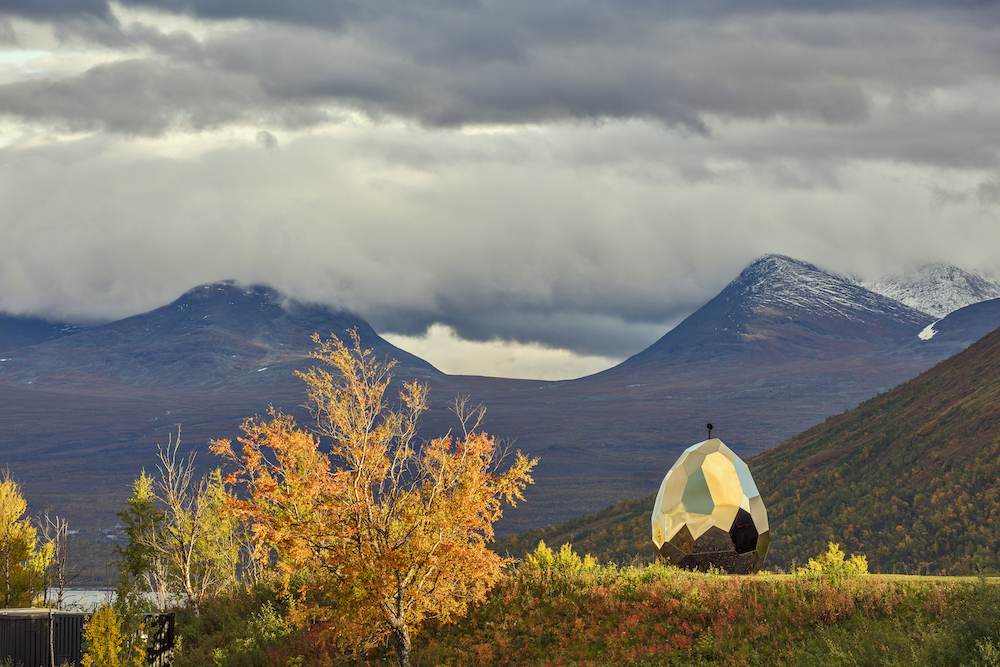
At Artipelag, a museum overlooking a bay in the Stockholm archipelago, an exhibition by Mats Bigert and Lars Bergström considers the intersection of culture and climate change. I stormens öga (In the storm’s eye) comprises works from 1990 to 2017 focusing on weather, climate, and human activity.

Artipelag was founded in 2012 by the Swedish entrepreneurs and designers Björn and Lillemor Jakobson with a mission that combines art, nature, and cuisine. It is one of Stockholm’s largest art museums, with more than 10,000 square meters, on a 54-acre wooded site about 12 miles east of Stockholm on Baggensfjärden bay. The name “Artipelag” is a combination of Art, Activities, and Archipelago, referencing a multi-disciplinary program set within the natural environment. It is characteristically Swedish.

Bigert and Bergström met at the Royal Swedish Academy of Fine Arts in 1986 and have collaborated together since then, focusing on themes of humanity, nature, and technology with sculptures, large-scale installations, and conceptual projects.

One of their most ambitious works, realized in 2015 and represented in the current exhibition, concentrated on a geo-engineering project on top of Kebnekaise, the highest mountain in Sweden. Kebnekaise has two main peaks, and in recent years the southern one has lost some 25 meters of elevation as the surrounding glacier melts in the warming climate. On the summer solstice in 2015, Bigert and Bergström deployed a 500-square-meter shade cloth on the peak, which is thought to have saved 30 centimeters of glacial ice from melting during the warmest summer month.

In I stormens öga, a remnant of the Kebnekaise rescue blanket covers a replica of the peak, split down the middle so that visitors can pass through a modeled version of the glacier, surrounded by a series of photographs, panoramas, videos, and materials from the 2015 project.

A recent work, Solar Egg, reimagines a sauna as a social sculpture. It was created last year for Kiruna, Sweden, as a meeting place to incubate ideas and conversations about the future. Kiruna is Sweden’s northernmost city, notable for its plan to relocate because of mining-related subsidence. The sauna is a traditional space for Swedes to enjoy warmth and reflection, and Solar Egg was designed to reflect Kiruna’s environment and nurture conversations about the city’s future. After Kiruna, the faceted, mirrored egg traveled to the Institut Suédois in Paris before its installation at Artipelag, where it appears as a folly within the natural landscape.

The exhibition’s featured image, a work titled Winterization, is described as a readymade that Bigert and Bergström found within a natural history museum in Stockholm. Polar bears are an unfortunate representative of climate change as the Arctic environment warms and their numbers decline. This one, shot during an expedition in Svalbard in the 20th century and now used as a prop for winter tires, has something in common with Robert Rauschenberg’s Monogram at the Moderna Museet in Stockholm.

From the duo’s 1991-93 series Climate Chambers I, two installations require visitors to experience environmental extremes from within “inverted sculptures.” In Steam Chamber, a massive steel rhinoceros slowly erodes into rust within a room saturated to 100 percent humidity, and in Storm Chamber, visitors are enveloped in powerful winds, with each sculptural room testing the boundaries between experience and endurance.

I stormens öga examines how weather and climate affect and threaten humans – as well as the inverse – and also functions as a retrospective of the 30-year collaboration of Bigert and Bergström. The exhibition opened on October 27 and continues through February 25, 2018.
Bigert & Bergström from Artipelag.